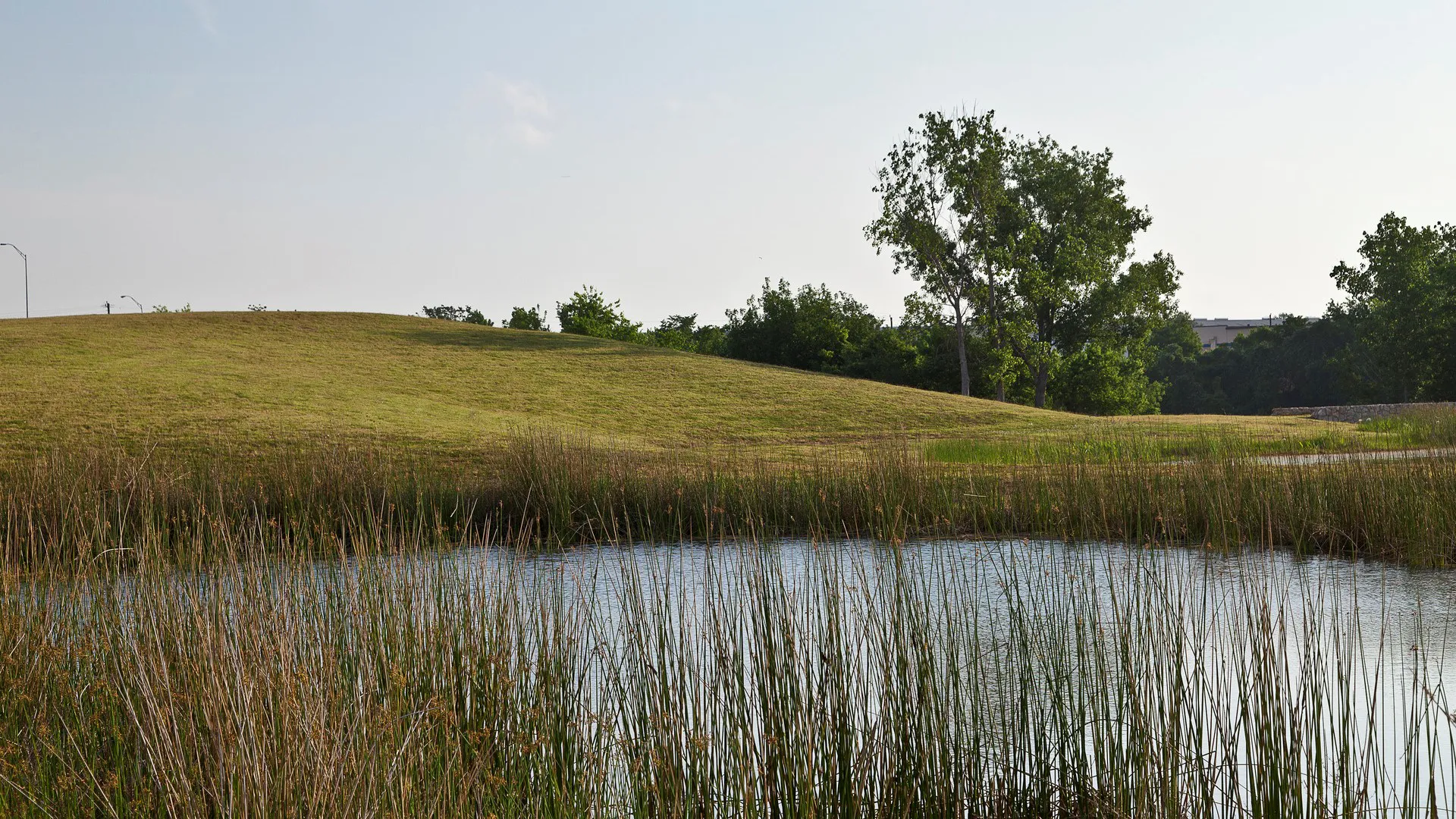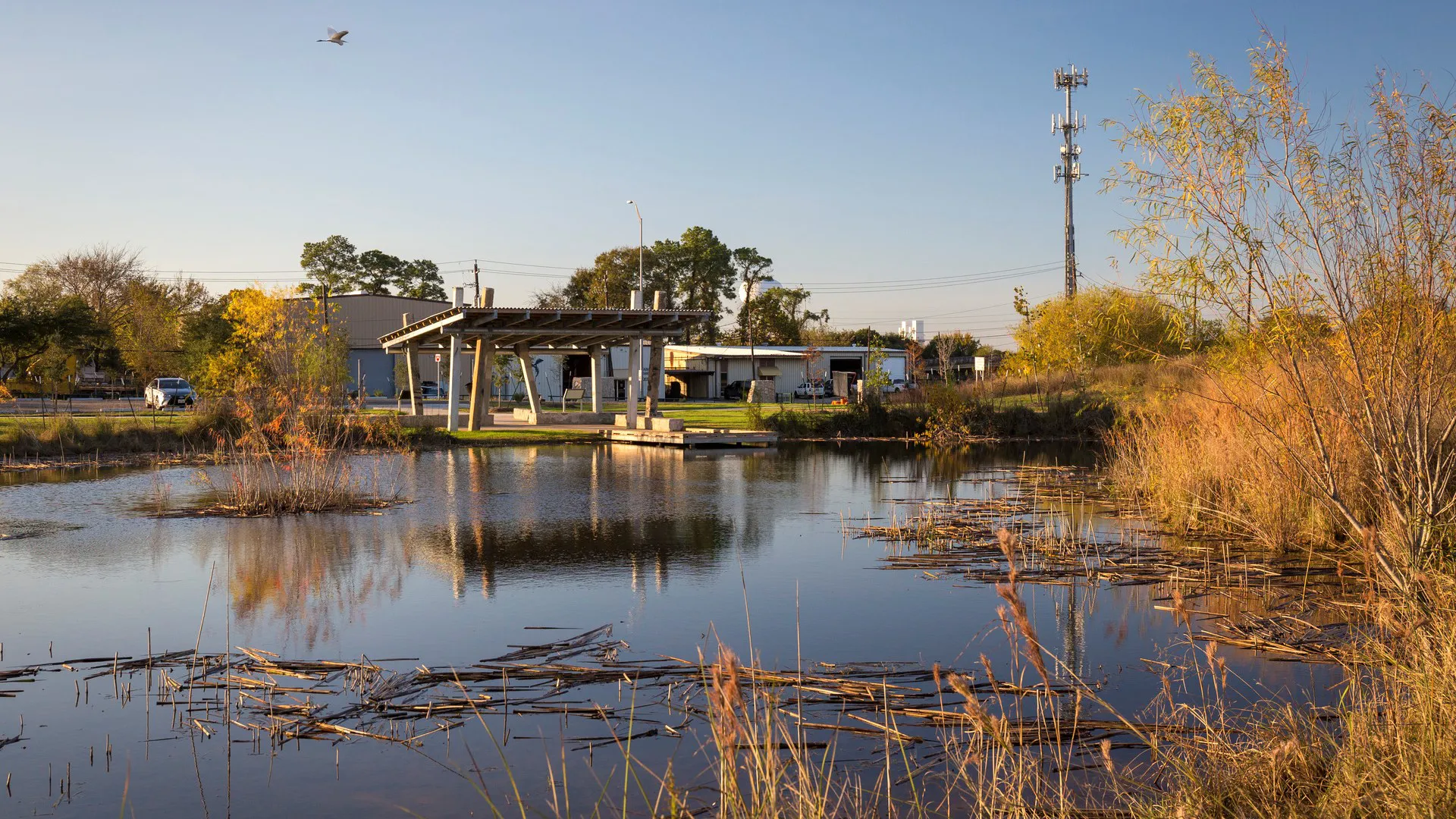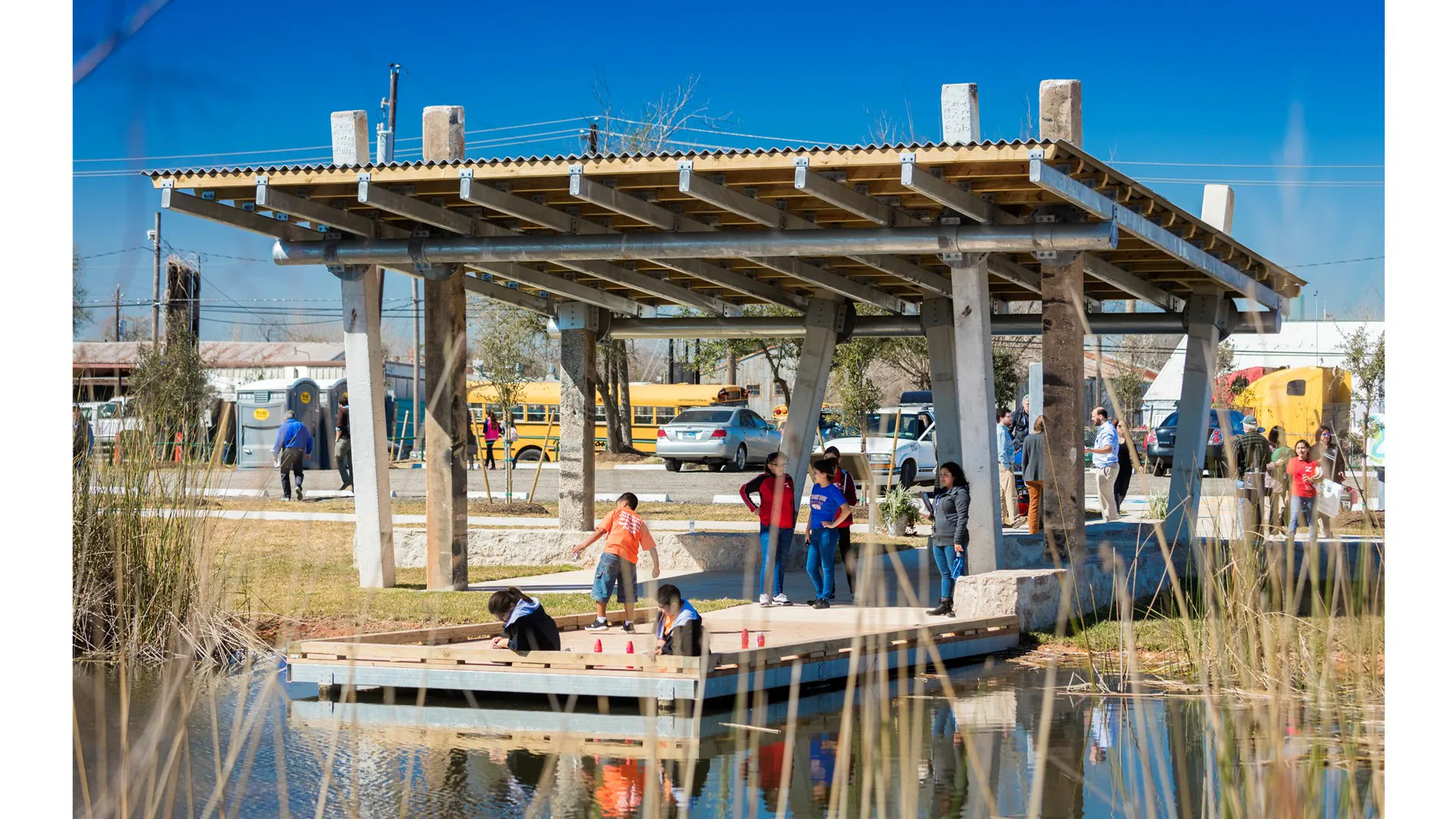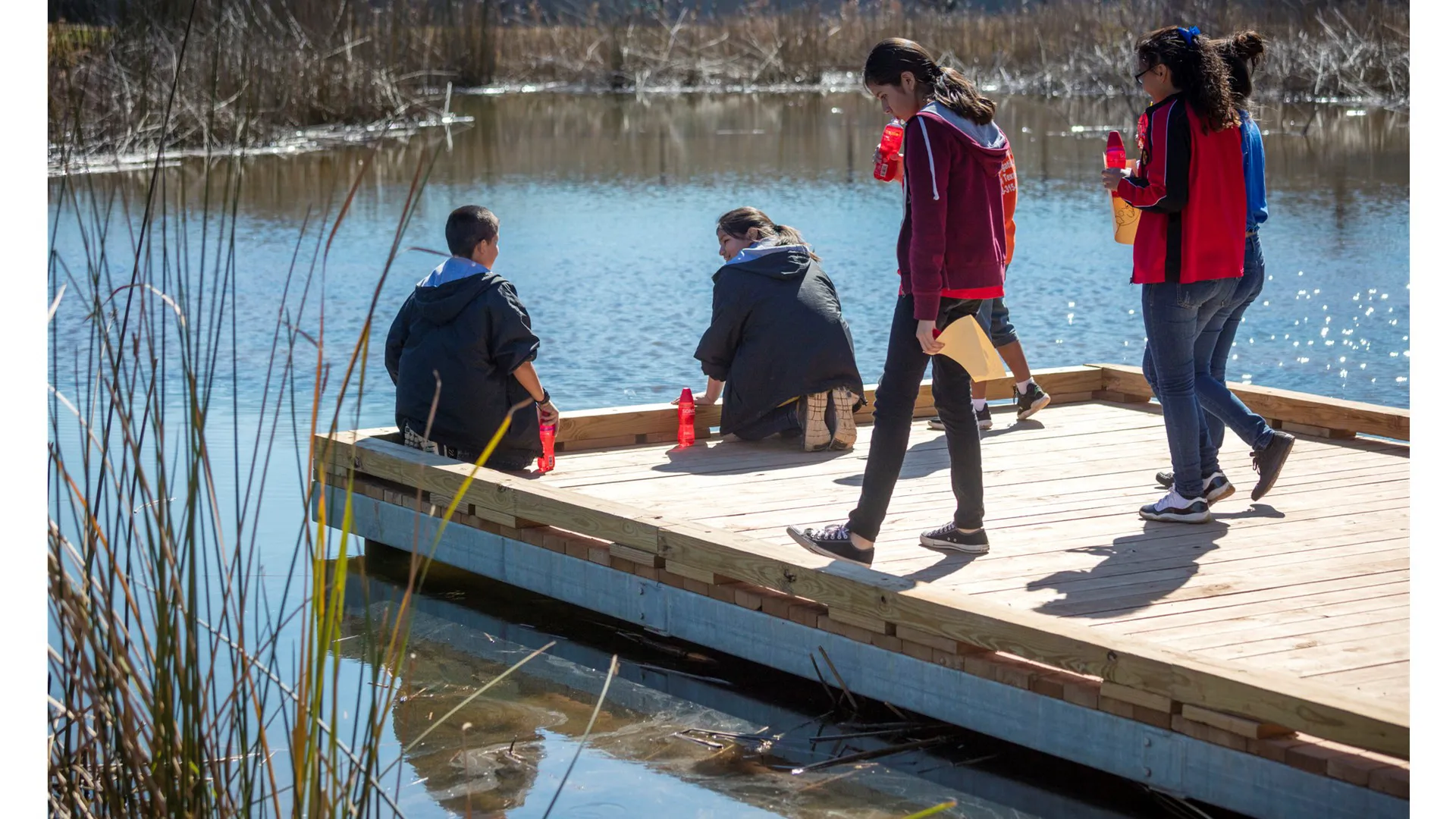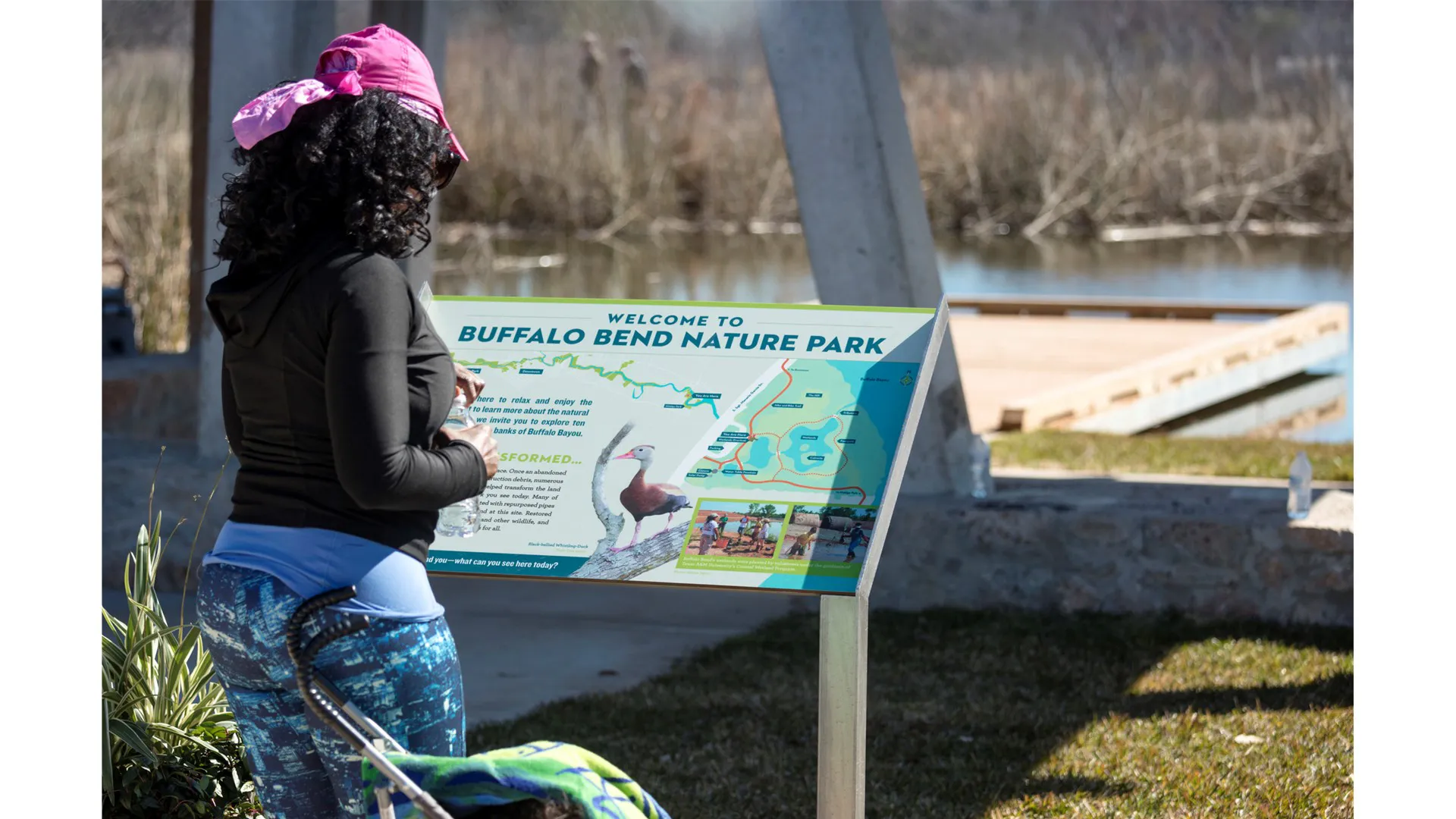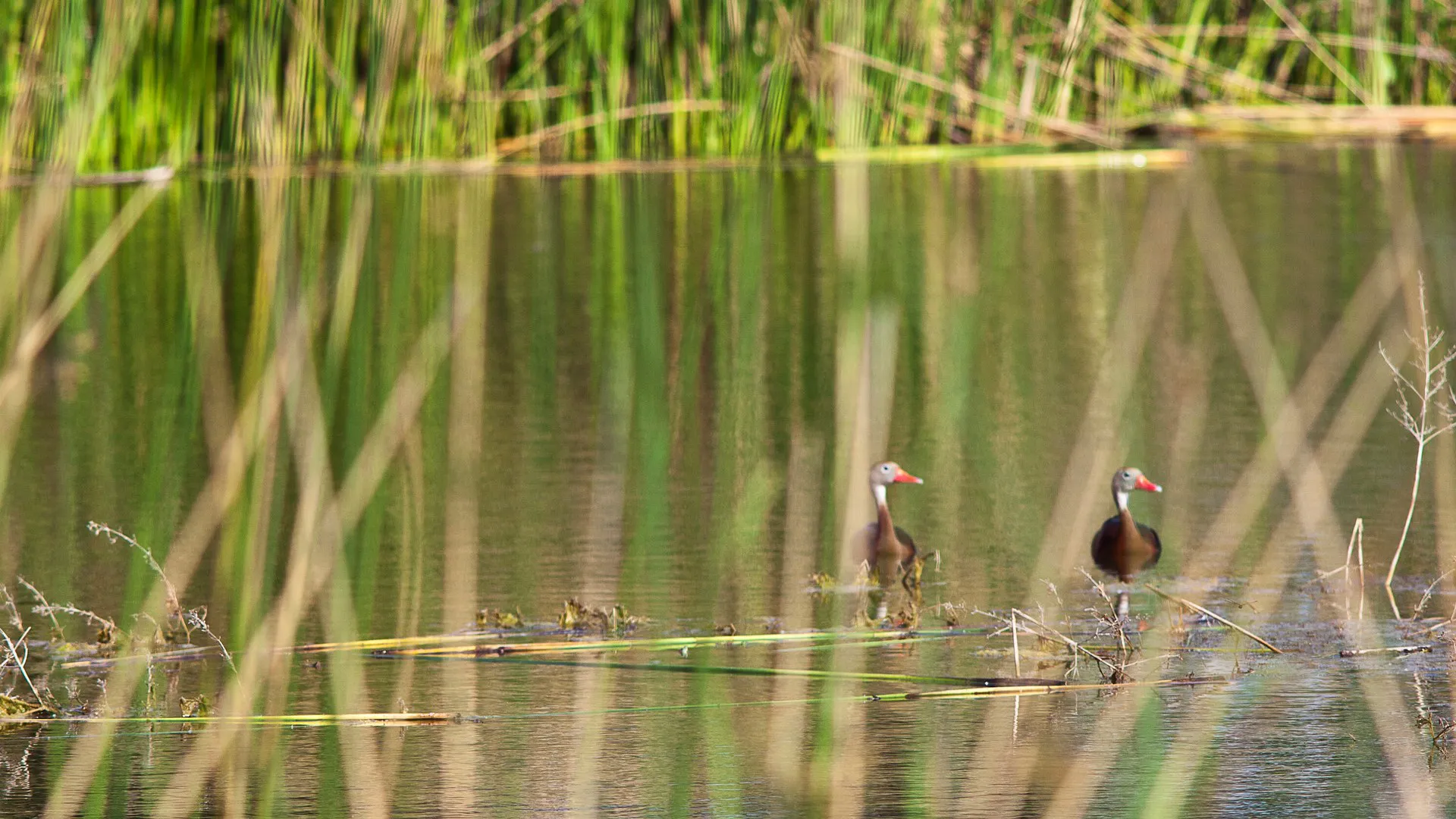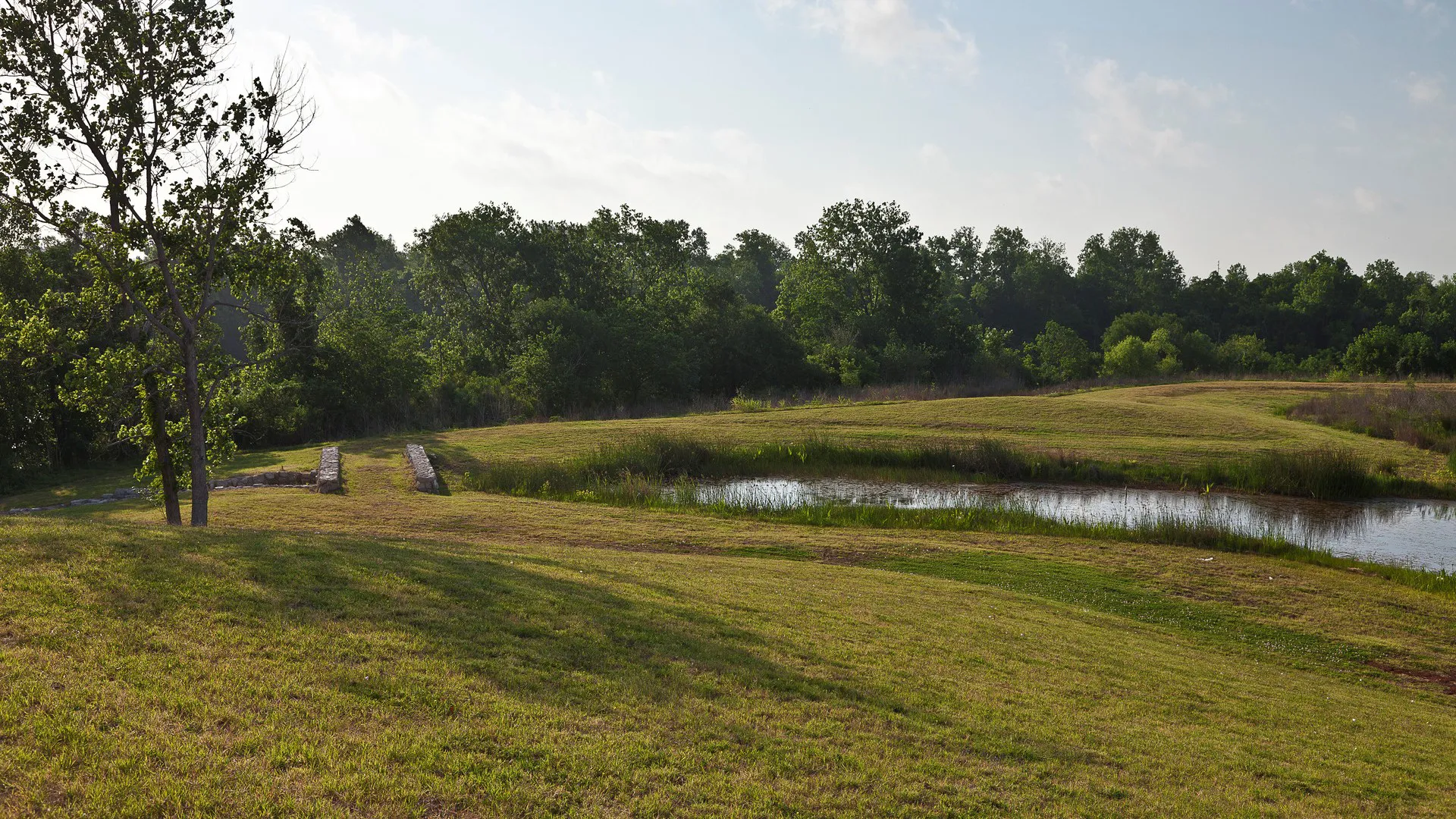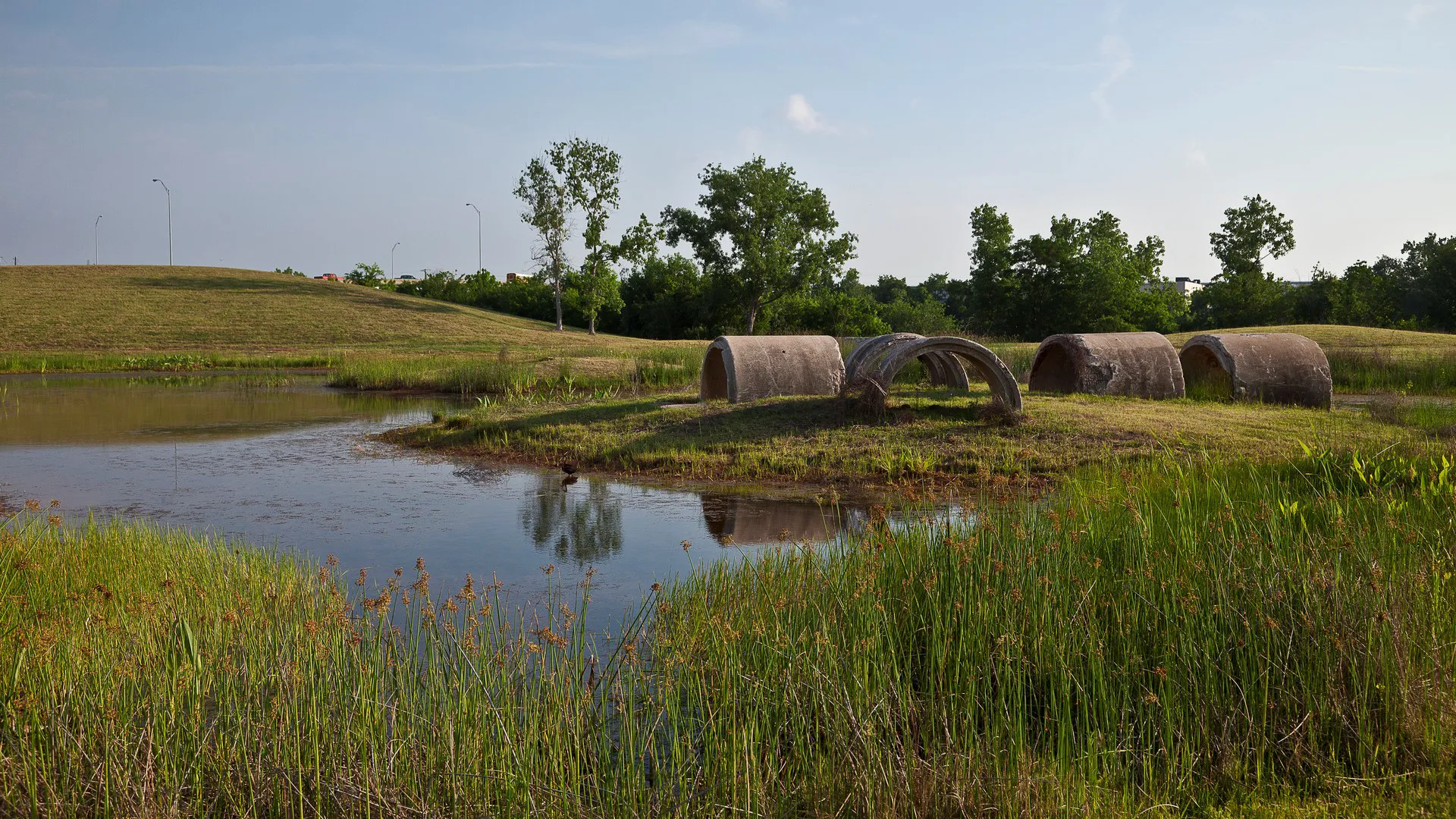Houston’s East End is a bifurcated community, with heavy industry brushing up against a vibrant and culturally diverse residential area. Answering residents’ call for more park space, SWA created Buffalo Bayou Bend Nature Park by converting a formerly neglected industrial site into a wetland ecosystem and public green space.
Three interconnected ponds, hosting 10,000 carefully chosen native plants, create a natural filtration system for urban runoff. A solar-powered pump draws water from Buffalo Bayou into a repurposed concrete cistern, initiating its journey through these constructed habitats. As it meanders, the water is cleansed of bacteria, excess nutrients, and toxic materials before returning to its source. An interactive “Water Table” allows visitors to compare the quality of incoming and outgoing flows, making this complex ecological process tangible.
ADA-compliant crushed gravel paths wind through the wetlands, while a small hill formed from excavated material adds topographic interest and offers a vantage point for visitors. Recycled elements throughout pay tribute to the site’s industrial past.
As a node on a 10-mile regional trail network, Buffalo Bend Nature Park addresses the need for open space in this historically underserved area and serves as a model for ecological restoration and education.
Baton Rouge Lakes
The 275-acre Baton Rouges Lakes system is a series of six lakes in central Baton Rouge adjacent to Louisiana State University, three major parks, and a diverse mix of neighborhoods. Recognizing opportunity in crisis, a newly funded master plan provides sound ecological restoration methods that will heal a dying lake system while reconnecting the region to its ...
Bensonhurst Park
Bensonhurst Park is part of the larger Shore Parkway, an 816.1-acre collection of parks that stretches across Brooklyn and Queens. Today, the site provides a series of pathways, passive seating areas, recreational fields and a playground.
SWA/Balsley created a master plan for the redesign of the north end of the park and final design and construction doc...
Guiyang Hot Springs
Guiyang Hot Springs, located in Guiyang City, China, brings together the rhythm of the Nanming River, and surrounding trails and trees to create a new urban ‘living room’ in the interstitial space created by new development and roadway infrastructure. Nestled into a mountainous site, the master planning addressed elevation changes of up to 100 meters and the e...
Palisades Park
Santa Monica’s famous pier area draws visitors who often disregard pavement boundaries and compact the landscape soil. Palisades Park, adjacent to the iconic pier, is a particularly active site for cyclists and tourists that has long been in need of a planting strategy to discourage pedestrian overflow into the landscape. SWA’s defensive planting strategy tack...




